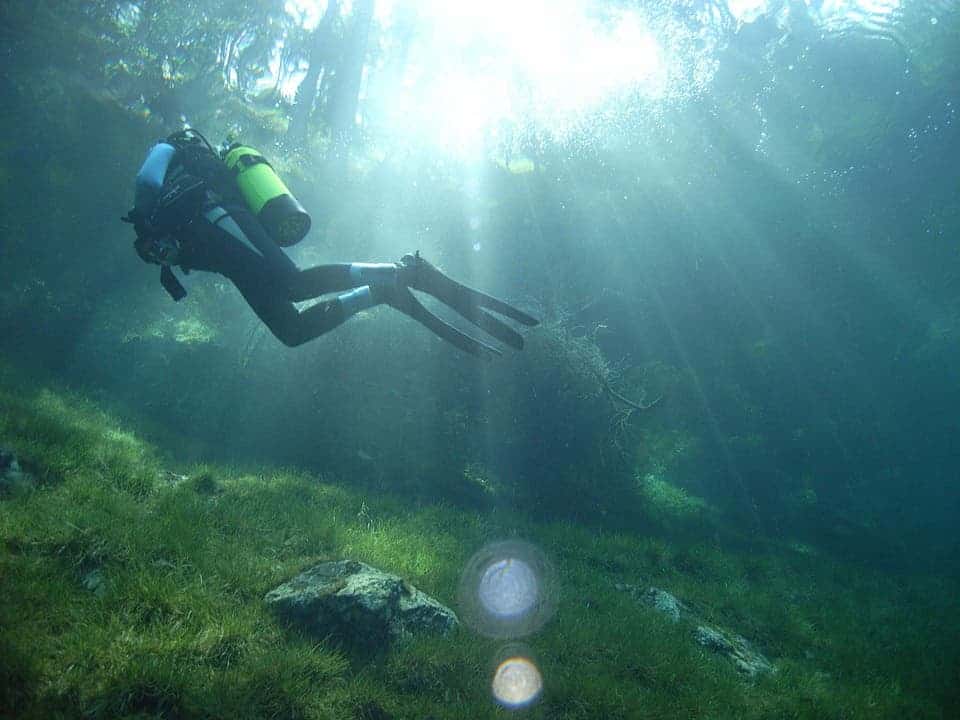Grüner See (Green Lake) is a lake in Styria, Austria in a village named Tragöß. During the winter, Grüner lake is just like any other lake, nice and calm, surrounded by a county park. However, it is surrounded by mountains, and during the spring, when the temperature rises and the snow melts, the basin of land below the mountains fills with water.
During the winter, the lake has a depth of 1-2 meters, but as the snow melts, it goes up to 12 meters, with the water covering the surrounding park – the result is the one you see. The lake reaches its maximum depth of around 12 m from mid-May to June and is claimed to look the most beautiful at this time. But this lasts only for about a month, as in July, the waters usually start to retreat.
The lake is very popular among travelers and even locals, and it’s easy to understand why. It’s just like walking in a normal park, except everything is underwater. A bridge and a bench can also be found underwater, as well as several paths and trees.
The water is also very clear, which is why it got its name – Grüner See means Green Lake. So head on to Austria, and visit this amazing wondeer of nature – just remember to bring your diving gear with you; and remember – there’s no kangaroos in Austria!
Was this helpful?




